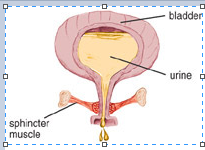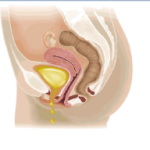What is urinary incontinence?
Urinary incontinence is the accidental loss of urine. It is a problem that affects emotional, psychological and social well-being of an individual.
How common is the problem?
It is a very common problem for a large number of women. It is not a disease but rather a symptom that can be caused by a wide range of conditions. Although it is more common in women over 60 years, it can occur at any age. It’s prevalence in elderly women is between 30% and 50%. Most women with this problem withdraw from social life, and try to hide the problem from their families, friends, and even their doctor. These reactions are unfortunate, because, in most cases it can be treated and controlled, if not cured.
What are the different types of incontinence?
Stress Incontinence: in women is a type of urinary incontinence in which the leakage occurs with physical activity such as coughing, laughing, sneezing, lifting a bag of groceries, or rising from sitting to standing position. The word “stress” does not mean emotional stress. The stress here is physical. The added abdominal pressure associated with these events can cause urine to leak. The time period during which leakage occurs may be very short.
Most women with stress urinary incontinence have weak pelvic floor muscles, thus preventing the sphincter muscles from working properly. These are the muscles that support the bladder, bladder neck, and the urinary passage - urethra. Among the reasons for weakened pelvic muscles are pregnancy, child birth, prior pelvic surgery and after menopause due to decreased levels of hormone estrogen. Another possible cause is a weakened urethral sphincter muscle itself. Both may co-exist in the same patient.
Urge incontinence: is the complaint of leakage of urine accompanied by or immediately preceded by a sudden compelling desire to pass urine.
Mixed incontinence is a combination of stress and urge urine leakage.
Continuous incontinence is the complaint of continuous leakage of urine.

How do you diagnose this condition?
To diagnose the cause, your doctor will take a detailed medical history, which includes information on the number of pregnancies, deliveries, other illnesses and injuries, medications being taken, and prior surgeries.
A physical examination will include vaginal and rectal examination, test of nervous system function, test for type of incontinence and amount of leakage etc.
After basic tests like urine analysis, ultrasound study to know residual urine, you may be asked to maintain a bladder diary in which you record over a 24 hours period, in your own environment and during normal daily activities, time and number of times you urinate, the voided volumes; time, type and volumes of incontinence; and also intake of fluids.
In few of the women, more detail evaluation may be required in the form of Uroflowmetry, Urodynamics, radiographic contrast studies like Micturating Cystourethrogram and cystoscopic examination under anesthesia.
What are the treatment options?
Treatment of urinary incontinence should be tailored to each patient’s needs and specific type of incontinence. In mild cases of stress incontinence, behavioral modification and pelvic floor muscle exercises can be tried in the beginning. If these fail or in women with severe stress incontinence, oral medications or surgical procedure can be tried.
Presently, there are many simple surgical procedures which have a high degree of success and also give long term relief. All the surgical procedures create support for the urethra and bladder neck, to prevent urine leakage during physical activity. The various sling and suspension procedures are performed through very small incisions in the lower abdomen or in the vagina, permitting early return to activity. Many patients with stress incontinence also have other conditions like bladder prolapse, rectocele or uterine prolapse that must be treated at the same time The time spent in the hospital normally ranges from 1 to 3 days, depending upon the type of procedure.
Complications such as infection may occur, but are usually easily treated. Retention of urine is a possible complication, but is temporary in most cases. During this period the urine is drained either with a catheter left in the bladder, or by self catheterisation.
Urge incontinence: The first step should be behavior modification like drinking less fluid, not drinking at bedtime and timed voiding around the clock. Exercising the pelvic muscle (Kegel exercises) also helps. The mainstay of treatment is medication called bladder specific anticholinergics. This consists of the use of bladder relaxants that prevent the bladder from contracting without the patient's permission. The most common side effect of the medication is dryness of the mouth, constipation or changes in vision. Sometimes, reduction of medication takes care of the side effects.
In more difficult cases, the bladder can be made bigger using a segment of small intestine. This operation called augmentation cystoplasty, is very successful in curing incontinence, but its main drawback is the need in 10 to 30 percent of the patients to perform intermittent self-catheterization to empty their bladder.
In patients who don’t respond to anticholinergics or those who cannot tolerate the side effects of these drugs, option of Botox injection to the bladder is available. The advantage is no need of medications and more sustained effect and the disadvantage is the dose may need to be repeated after 6-9 months.

